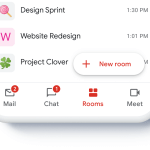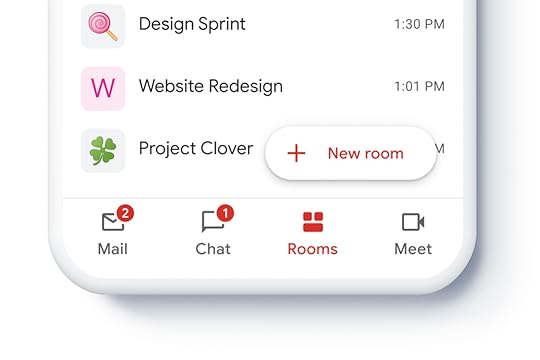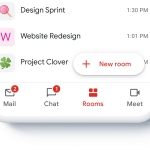Dominique Luchart's Blog, page 624
May 14, 2021
Google files legal brief to protect work program for immigrant spouses,

Google has filed an amicus brief to protect a program that allows the spouses of H-1B visa holders to work in the United States. The brief has been signed by numerous tech giants including Apple, Amazon, Twitter, and Microsoft.
The tech industry has long relied on foreign talent to fill the gaps in its workforce. In 2020, Google and Amazon were among the top sponsors of H-1B visas, which are reserved for highly skilled workers.
Under President Trump, the program came under fire. The former president drastically boosted denial rates of H-1B applications, as reported by the Seattle Times. He also went after H-4 visas, which are reserved for the spouses of people with H-1B status. Trump threatened to ban H-4 visa holders — a group that is 90 percent women — from working in the United States.
While that ban never came to pass, the ability for people with H-4 visas to work is still under threat from a lawsuit against the federal government. The suit, called Save Jobs USA v. US Department of Homeland Security, was brought by tech workers, who argue that H-4 holders are unfair competition for Americans looking for jobs.
The case was delayed by President Trump’s proposed ban, which potentially could’ve helped decide the outcome had it passed. Now that the lawsuit is moving forward again, Google and other tech companies want to ensure that the spouses of immigrants maintain their right to work.
In its blog post, Google argues that if the program allowing H-4 holders to work were to go away, “the practical effect is that we welcome a person to the U.S. to work but we make it harder for their spouse to work.” It says that it would hurt not only immigrant families, but Google’s ability to hire top talent.
“As an immigrant myself, I have been the beneficiary of a welcoming America and I hope we can ensure that same welcome for future immigrants by preserving the H-4 EAD program,” wrote Catherine Lacavera, vice president of Google’s legal department, in the blog post. “Ending this program would hurt families and undercut the US economy at a critical moment.”
The post Google files legal brief to protect work program for immigrant spouses, appeared first on NEWDAWN Blog.
Google files legal brief to protect work program for immigrant spouses, Zoe Schiffer

 Illustration by Alex Castro / The Verge
Illustration by Alex Castro / The VergeGoogle has filed an amicus brief to protect a program that allows the spouses of H-1B visa holders to work in the United States. The brief has been signed by numerous tech giants including Apple, Amazon, Twitter, and Microsoft.
The tech industry has long relied on foreign talent to fill the gaps in its workforce. In 2020, Google and Amazon were among the top sponsors of H-1B visas, which are reserved for highly skilled workers.
Under President Trump, the program came under fire. The former president drastically boosted denial rates of H-1B applications, as reported by the Seattle Times. He also went after H-4 visas, which are reserved for the spouses of people with H-1B status. Trump threatened to ban H-4 visa holders — a group that is…
The post Google files legal brief to protect work program for immigrant spouses, Zoe Schiffer appeared first on NEWDAWN Blog.
May 13, 2021
Maker of expensive Japanese toaster gets into smartphone business, Sam Byford


Balmuda, a Japanese design company known for its stylish appliances, has announced plans to make a smartphone. There aren’t many details on the device itself yet, but it’ll be a 5G handset that’s expected to be released in November. SoftBank will sell it as a carrier model, while Balmuda will also offer an unlocked version.
In its announcement, Balmuda notes that since the smartphone business is getting increasingly commoditized, the company wants to provide an experience that only it can. However, the actual manufacturing is out of Balmuda’s wheelhouse, so it’s partnering with Kyocera on the phone.
Balmuda’s toaster sells for about $235 in JapanBalmuda has a fairly limited product line for the home including air purifiers, humidifiers,…
The post Maker of expensive Japanese toaster gets into smartphone business, Sam Byford appeared first on NEWDAWN Blog.
Maker of expensive Japanese toaster gets into smartphone business,

Balmuda, a Japanese design company known for its stylish appliances, has announced plans to make a smartphone. There aren’t many details on the device itself yet, but it’ll be a 5G handset that’s expected to be released in November. SoftBank will sell it as a carrier model, while Balmuda will also offer an unlocked version.
In its announcement, Balmuda notes that since the smartphone business is getting increasingly commoditized, the company wants to provide an experience that only it can. However, the actual manufacturing is out of Balmuda’s wheelhouse, so it’s partnering with Kyocera on the phone.
Balmuda has a fairly limited product line for the home including air purifiers, humidifiers, lights, speakers, rice cookers, and so on. Its best known product is a toaster called “Balmuda The Toaster,” which sells for 25,850 yen (about $235, though it’s available in the US for $329 through the MoMa Design Store) and uses steam to ensure your shokupan, among other things, is perfectly crispy on the outside and fluffy on the inside. Bloomberg reported five years ago that it had become a cult hit in Japan with a three-month waiting time to buy one.
I have the toaster, and while I’m not sure I would necessarily recommend anyone spend $235 or $329 on a toaster, it is a pretty great toaster. The neat design touches everywhere, from the tiny little mug you use to pour in water for the steam to the cute noises it makes when you turn the timer dial, do make me somewhat curious as to what Balmuda could bring to a phone. We’ll let you know when we find out.
The post Maker of expensive Japanese toaster gets into smartphone business, appeared first on NEWDAWN Blog.
PSA: You can probably try Gmail’s new integrated Chat now, Mitchell Clark

 Image: Google
Image: GoogleGoogle is rolling out the ability to access Chat messages right from Gmail to more iOS and Android users, after introducing it as a feature for Google Workspace users last July (via 9to5Google). It’s still a test feature, so getting access to it can take a bit of work, and it may not be available to your depending on your account settings (my colleagues and I were able to enable it on personal accounts, but not our work accounts). If you can get it working, though, you’ll be rewarded with a new tab at the bottom of the Gmail app, giving you access to your IMs.
To enable the feature on iOS or Android, open the side menu and scroll down to Settings. If you have multiple accounts, select the one you want, then look for “Chat (early access)”…
The post PSA: You can probably try Gmail’s new integrated Chat now, Mitchell Clark appeared first on NEWDAWN Blog.
PSA: You can probably try Gmail’s new integrated Chat now,

Google is rolling out the ability to access Chat messages right from Gmail to more iOS and Android users, after introducing it as a feature for Google Workspace users last July (via 9to5Google). It’s still a test feature, so getting access to it can take a bit of work, and it may not be available to your depending on your account settings (my colleagues and I were able to enable it on personal accounts, but not our work accounts). If you can get it working, though, you’ll be rewarded with a new tab at the bottom of the Gmail app, giving you access to your IMs.
To enable the feature on iOS or Android, open the side menu and scroll down to Settings. If you have multiple accounts, select the one you want, then look for “Chat (early access)” under General. Flipping the toggle will turn it on (after you restart the app).
 Turning on the Chat toggle will give you access to personal and group chats in Gmail.
Turning on the Chat toggle will give you access to personal and group chats in Gmail.If you don’t see the Chat option, you may need enable it in the desktop version of gmail first, by going to https://mail.google.com/mail/u/0/#settings/chat, then selecting Google Chat in the Chat menu. After restarting the Gmail app on your phone, the toggle should appear.
 You may have to enable Chat on desktop before you can get it on your phone.
You may have to enable Chat on desktop before you can get it on your phone.Chat is Google’s replacement for Hangouts, which it has slowly been moving users away from. Chat’s also available as a separate app, but if you’re the type of person who doesn’t like having a ton of messaging apps on your phone, having it just exist as a tab in Gmail could be your kind of thing (especially if you live in email all day).
 Pretty much just like having the chat app, but in Gmail.
Pretty much just like having the chat app, but in Gmail.The post PSA: You can probably try Gmail’s new integrated Chat now, appeared first on NEWDAWN Blog.
Epic fights Apple in court by playing Candy Crush, Elizabeth Lopatto

 Illustration by Alex Castro / The Verge
Illustration by Alex Castro / The VergeExpert testimony continues
The post Epic fights Apple in court by playing Candy Crush, Elizabeth Lopatto appeared first on NEWDAWN Blog.
Epic fights Apple in court by playing Candy Crush,

 Illustration by Alex Castro / The Verge
Illustration by Alex Castro / The VergeSometimes I reflect on my life and wonder where I went wrong, such that I am sitting on a wooden pew in federal court, watching a Google search for Candy Crush Saga on the display monitor. This is a huge trial with major stakes for tech companies. It is also a crashing bore.
On the stand is Lorin Hitt, professor of operations, information, and decisions at the University of Pennsylvania Wharton, looking uncomfortable behind his face shield. During his direct examination in the ongoing Epic v. Apple trial, Hitt testified that he didn’t think having to access an app like Candy Crush through a browser instead of the app counted as “friction” for the user — and that it certainly was less friction than “real-world” alternatives, such as leaving a convenience store and then crossing the street to go to another convenience store.
The point of Hitt’s earlier testimony was that game developers “multi-home” games to PC and mobile. He’s Apple’s expert witness, and he is here to convince the judge that being blocked from the App Store isn’t a huge barrier to developers. Epic — whose game Fortnite is in fact blocked from the store — has taken Apple to court to show otherwise. And the picture Hitt painted on his direct examination was largely dismissive of Epic’s concerns.
Epic attorney Yonatan Even, also in a face shield, is now doing his best to blow a hole in Hitt’s testimony. I am doing my best to follow a confusing spreadsheet that includes games that Hitt has promised are on both PC and mobile phones. Even begins by pointing out some of these games are not, in fact, available for PC. One game, Words Story, is listed as available on PC on the document, but does not say this on the developer’s website. In the Microsoft store, a “Words Story” with the same art exists, but it’s not the same developer. “Sir, this is not the same developer and not the same game, is it?” Even says. “It’s what is called a ‘fake game.'”
We go through this tiresome process for several games: Helix Game, Crowd City, BitLife, Happy Glass, Paper.io 2, and Mr. Bullet. I have never heard of any of these small-potatoes games, which makes them sort of a weird point of comparison for the most popular game in the world. The app developer pages suggest they are not available on PC, despite Hitt’s document to the contrary. Things are getting contentious, and Hitt is beginning to have a hang-dog “Rick Moranis in Honey I Shrunk the Kids” vibe. Did Hitt double-check the data to make sure it was the same developer across stores? Can he tell the court under oath that a certain app is from the same developer?
“Can you give the court sworn testimony that you have seen with your own eyes that this game is also available on PC?” Even asks.
Hitt can’t guarantee all the games listed in the unintelligible spreadsheet are from the same developer across all platforms, it turns out. He says his team of researchers did the analysis, and he trusts his team.
Hitt said earlier that he’d identified eight games that let people buy things on the iOS web browser, and then use them in iOS apps; these are identified in the spreadsheet. Epic has complained that this process isn’t good enough — and certainly isn’t ubiquitous. Now, Even raises the “frictionless” process that Hitt had blithely testified to earlier in the day. Candy Crush Saga is the example Even chooses. We go to the website, and press “install,” where we are promptly sent to the App Store. We tab back to the website. The only possible way to play on the web is on desktop. The Facebook option for Candy Crush, too, is desktop.
“That’s part of the frictionless process you have envisioned?” Even asks, somewhat sarcastically.
We try another game, Clash Royale, developed by Supercell. We go to Supercell’s FAQ, where it emerges that payment processes are only through Apple’s App Store or Google play. Supercell itself doesn’t keep payment information “And yet you believe that your team managed to go into a website and buy legitimate Clash Royale money and go back to the app? That’s your testimony?” Even asks.
Then he twists the knife: The typical user of Clash Royale doesn’t have a research team, Even observes.
I am terrified we are going to go through all eight apps, but thankfully Even spares us the exhaustion. According to Even, there are three apps that support buying something on the web, then using it in an app: PlayerUnknown’s Battlegrounds, Roblox and… Fortnite. (Fortnite, however, is now banned from iOS.) Does Hitt have any basis to dispute this?
Hitt says he trusts his team. I am feeling very bad for the team, which has largely been thrown under the bus by Hitt here.
On redirect, Apple’s Cynthia Richman tries to stop the bleeding. Sometimes developers license games to other developers — which might explain some of the cases where the developers don’t match. Hitt also tells us that Even’s rather brutal examples aren’t typical. Hitt has personally purchased V-bucks on a mobile browser, he tells us proudly.
“It looked pretty difficult given the examples you provided,” says Judge Yvonne Gonzalez Rogers. What’s the explanation for why we couldn’t do these things during the cross-examination? Well, Hitt says, there were other links in the spreadsheet.
That may very well be true. But Even’s point stands: most of us do not have research teams. I wish I did — I could send them to the trial in my stead and blame them if the work was subpar. Instead, I am personally sitting through excruciating expert testimony. Why am I focusing on this, specifically? It’s the most interesting thing that happened all day.
The post Epic fights Apple in court by playing Candy Crush, appeared first on NEWDAWN Blog.
Netflix will try to make Ultraman a global name with a new CG movie,

Netflix announced that it’s partnering with Tsuburaya Productions to create a new CG Ultraman movie, in the hopes of bringing the popular Japanese character to an even larger global audience. Ultraman’s never been a household name outside of Japan despite leaving a huge impression on popular culture — the original Ultraman series popularized the “giant man in a suit fights people dressed up as monsters in a model city” genre — but Netflix is hoping to change that.
The new CG Ultraman film, besides leaving the franchise’s original live action format, will feature a different version of the character and what sounds like a slightly unusual setup for the plot — Ultraman has undergone “dadification”. Per Tsuburaya Productions’ synopsis:
Baseball superstar Ken Sato returns to his home country of Japan to pick up the mantle of Earth-defending superhero Ultraman, but quickly finds more than he bargained for when he’s forced to raise the offspring of his greatest foe, a newborn Kaiju. Struggling to balance the roles of teammate and new father, Ken must confront his own ego, his estranged father, and the conniving Kaiju Defense Force to rise up and discover what it truly means to be Ultraman.
The film will be directed by Shannon Tindle, and co-directed by John Aoshima, who previously worked on Disney’s Gravity Falls. Tindle’s background in animation is diverse, having worked in traditional 2D animation as a character designer on Foster’s Home for Imaginary Friends, and stop-motion animation as the creator of Laika’s Kubo and the Two Strings and a character designer/animator on Coraline. Tindle is also currently the showrunner on the Netflix animated series Lost Ollie.
My guy stopped by to celebrate the announcement. pic.twitter.com/N3SDXKL1qq
— Shannon Tindle (@ShannonTindle_1)
Tsuburuaya Productions CEO Takayuki Tsukagoshi describes the new film project as “the first full-scale endeavor to reach the global market for Tsuburaya Productions,” and with Netflix’s over 200 million subscribers, there’s a good chance somebody is going to learn they’re a huge Ultraman fan after watching this film.
That’s great for Netflix, because it already has an Ultraman anime series it can point people at, with a second season in the works. Which is all part of the streaming service’s larger push into the anime space, right as the competition is really heating up. Dropping a new Ultraman movie could be great for the character, but ultimately it’s even better for Netflix’s ongoing goal to be your only source of entertainment.
The post appeared first on NEWDAWN Blog.
May 12, 2021
This innovative robotic gripper can pick up a single tiny grain of sand – CNET,

If it’s true time slips through our fingers like sand, these soft robot grippers might be able to stop the clock.
GIF by CNETThe grippers cushion objects as they grasp, allowing the pincers to handle fragile, irregularly configured and slippery items. They can also be scaled up or down to conform to a range of shapes and sizes, making them capable of picking up everything from a plastic water bottle, a rock and a large binder clip down to a tiny grain of sand.
The researchers behind the grippers, engineers from Boston University, envision a number of potential applications. Perhaps most promising, the grabbers could attach to assistive devices like robotic hands to more closely mimic human fingers. Dexterity, especially when it comes to squishy objects, has proven a challenge in the quest to create lifelike robotic appendages.
“One benefit of these structures is that a very coarse movement can result in rather fine grasping,” says Douglas Holmes, a BU mechanical engineering professor and co-author of a new paper on the grippers that appears in Wednesday’s issue of the journal Science Robotics.
The BU boffins found inspiration for their grippers in the ancient Japanese art of kirigami, a type of origami that permits cutting paper rather than merely folding it into shapes. While they were studying the properties of flat kirigami sheets to better understand the potential engineering applications of shape-shifting structures, a happy accident occurred.
GIF by CNETMost kirigami sheets come on a roll, like wrapping paper. As anyone who’s wrapped a present knows, gift wrap comes off its cardboard roll slightly curved. So does kirigami paper.
“For one experiment we forgot to flatten the sheet, and when we pulled on the kirigami structure, much to our surprise, it made a grasping motion,” Holmes says.
That motion led the researchers to conceive of a flexible gripper made with a bendable thin elastic shell shaped like a four-petal flower and patterned with carefully positioned linear cuts like you’d see in a kirigami creation.
The pattern results in a scalable cell that can bend in 3D to pick up objects. It can function alone or be connected in a series to create kirigami gripper arrays capable of simultaneously grasping multiple delicate and slippery things.
Handy indeed.
 Multiple gripper units can work together as an array to pick up a long object like a pencil.
Multiple gripper units can work together as an array to pick up a long object like a pencil.BU video screenshot by Leslie Katz/CNET
Sci-Tech
The post This innovative robotic gripper can pick up a single tiny grain of sand – CNET, appeared first on NEWDAWN Blog.



